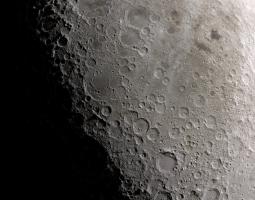NASA Planetary Science
NASA’s planetary science program is engaged in one of the oldest scientific pursuits: the observation and discovery of our solar system’s planetary objects. We undertake this enterprise in order to better understand the history of our solar system and the distribution of life within it.
For decades, NASA’s planetary science program has advanced the scientific understanding of the solar system in extraordinary ways, while pushing the limits of spacecraft and robotic engineering design and operations. To date, NASA spacecraft have visited every planet as well as a variety of small bodies; and some of our current missions will bring back new samples from exciting destinations, allowing iterative detailed study and analysis back on Earth. The scientific foundation for this enterprise is described in the NRC planetary science decadal survey, Vision and Voyages for Planetary Science in the Decade 2013-2022 (NRC, 2011). Using the decadal recommendations as our guide, planetary science missions and research inform us about our neighborhood and our own origin and evolution, and they are necessary precursors to the expansion of humanity beyond Earth. In the future, humans will return to the Moon, Mars, and possibly other solar system bodies to explore them, after they have been investigated and understood using robotic missions.
Current Missions
NASA’s Planetary Science missions continue to revolutionize our understanding of the origin and history of the Solar System. NASA missions continue to explore from the innermost planet, Mercury, to the outer reaches of the Solar System, where Pluto orbits among many Kuiper Belt Objects. We have orbited and traversed the surface of Mars, finding evidence of liquid water and ancient habitable environments. Closer to home, the Planetary Science Division uses Earth-orbiting telescopes and ground-based sensors in coordination with other organizations, including the National Science Foundation and the U.S. Air Force. These telescopes and sensors are used to survey the volume of near-Earth space to detect, track, catalog, and characterize near-Earth objects (NEOs), which may pose hazards to Earth or provide destinations and resources for future exploration, and to investigate our exoplanet counterparts through comparative planetology.
NASA’s robotic explorers gather data to help scientists understand how the planets formed, what triggered different evolutionary paths among planets, what processes have occurred and are active, and how Earth among the planets became habitable. In searching for evidence of life beyond Earth, scientists use these data to map zones of habitability, studying the chemistry of unfamiliar worlds, and unveiling the processes that lead to conditions necessary for life. With this knowledge, NASA is enabling safe and effective human missions to destinations beyond low Earth orbit.




